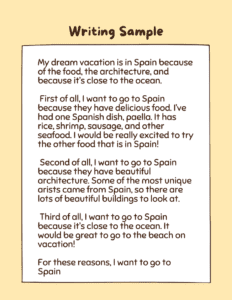The writing process can be one of the most difficult things to teach students to feel comfortable with and engage in independently. However, there are many approaches you can take if your child is struggling with writing! Sometimes a different angle is all that is needed for students to start writing with ease.
All subjects (writing especially) require scaffolding to teach effectively. A scaffold in education is similar to a literal scaffold — it is a temporary structure to help facilitate a task until the structure is no longer needed. Scaffolding looks different depending on the skill being taught and the age of the child but is embedded in all educational settings. Checklists, pre-writing activities, and modeled examples are all examples of scaffolding that support students as they take on bigger and more complex writing tasks. One lesser known scaffold that we include in several of our programs is helping students critique a writing example.
We can all relate to the idea that it is much easier to critique than it is to create — this is why we are experts at coming up with movie reviews but very few of us are in the director’s chair! Giving students the chance to critique a writing sample and make observations about what is working and what the writer could improve on gives them a low-stakes and stress-free way to engage in the writing process. The writing isn’t theirs so it takes away the anxiety and self-consciousness that many emerging writers feel when being taught how to write.
Another strength of this approach is that it teaches students to look at the writing process from a reader’s perspective. At its core, learning to write is about learning how to communicate your message effectively to a reader. Someone will read your writing and will need to be able to follow along, which we all intuitively understand but somehow lose sight of when we sit down to write. Transition words, topic sentences, etc. are all mechanisms to make sure the reader understands the connections between ideas that are being expressed, and looking at a writing sample is a great way to remind budding writers of their importance.
Lastly, you can easily engineer a writing sample to include or exclude certain features. For example, the writing sample below purposefully uses repetitive transition phrases so that students see that it’s important to make intentional choices about wording transitions in their own writing. Use the writing sample below with your child and see what else they notice!


